|
|
Post by us4-he2-gal2 on Mar 18, 2009 6:57:09 GMT -5
Cuneiform Email Course via OI this Summer! So if anyone determined they must learn cuneiform (and why wouldn't you determine this) and you've been influenced by this thread and Sheshki's tireless and encompassing cuneiform popularization - check out that tattoo from Austria!  - you should consider both the enenuru school of cuneiform and the offer made by the Oriental Institute this summer. They will, for a predictably high sum, mark your self study basically and give you a frameable paper certificate if you keep at it basically. For more about this offer, you can go here: event.uchicago.edu/maincampus/Once at this site, in the Search events area, change the start date to April 20th, and click search - you will find the details on the offered course. There is no easier way to get to the page. Keep in mind this is a chance to learn basic cuneiform from home by correspondence, you get the work and complete it, fax or snail mail it back - it is corrected by a professor at the institute. Bear in mind the course will cost over $350, then you must also buy the course books in addition - but most importantly, this is a NON-CREDIT COURSE!! Thats right, you do all the work, pay all the money, but they don't get you a university course credit. That really blows 0_0 however, I am currently giving the course serious thought and may sign up soon. There is a deadline coming after all. Thanks to Rookillus for finding this website and course! Awesome find especially for us Canadians with out limited options 0_0
|
|
|
|
Post by us4-he2-gal2 on Apr 25, 2009 20:28:17 GMT -5
Hey all:
Just an update to say I have in fact signed up for the cuneiform by mail course mentioned above along with another enenuru member. While I may have hoped to get a little Assyrian language in with the effort, there is probably little to be had in this course as it is a examination of basic cuneiform through Snell and using also the small examination of cuneiform found in C.B.F. Walker 1987.
That said, it is enjoyable to work through the signs which always brings an odd sort of satisfaction to any Orientalist. Its the most I can do at this time to develop the initiative Sheshki has inspired here, so even without a credit for this effort it is enjoyable.
The course itself is fairly open in format - there are 8 lessons and its recommended you do 2 a week, each takes about 2 hours. The would mean that in theory, you would be working through Snell's cuneiform in 8 sittings over the course of one month, which seems fairly unrealistic to me, someone new to cuneiform is going to need more repetition in order to memorize the 112 odd signs. Of course you set your own pace and as long as all assignments are in by August, it doesn't matter.
Well, better get something done - an easy study for me but between a summer course in Greek Religion, private studies and work, time as always will be a challenge ;] To update later.
|
|
af
dubsartur (junior scribe)

Posts: 22
|
Post by af on Sept 12, 2009 8:24:46 GMT -5
Af's cuneiform diary
(learning newassyrian cuneifroms)
My first steps. I hope these pics are not too large?     |
|
|
|
Post by us4-he2-gal2 on Sept 13, 2009 16:23:31 GMT -5
Ah wonderful!! I see Roman lettering, Russian lettering and Cuneiform script all on one page  And your using square paper very smart. The cuneiform looks excellent so far Af, very strong hand - The order you practicing the signs is different to me but seems to carry a strong logic - Keep going!  |
|
|
|
Post by sheshki on Dec 4, 2009 16:52:26 GMT -5
I have to announce that i just watered some clay.Its about time to make new tablets. Any text suggestions?
|
|
|
|
Post by us4-he2-gal2 on Dec 6, 2009 14:10:47 GMT -5
|
|
|
|
Post by sheshki on Dec 11, 2009 16:37:14 GMT -5
First id like to thank Bill for the text suggestion he sent. Here is the tablet i want to copy. 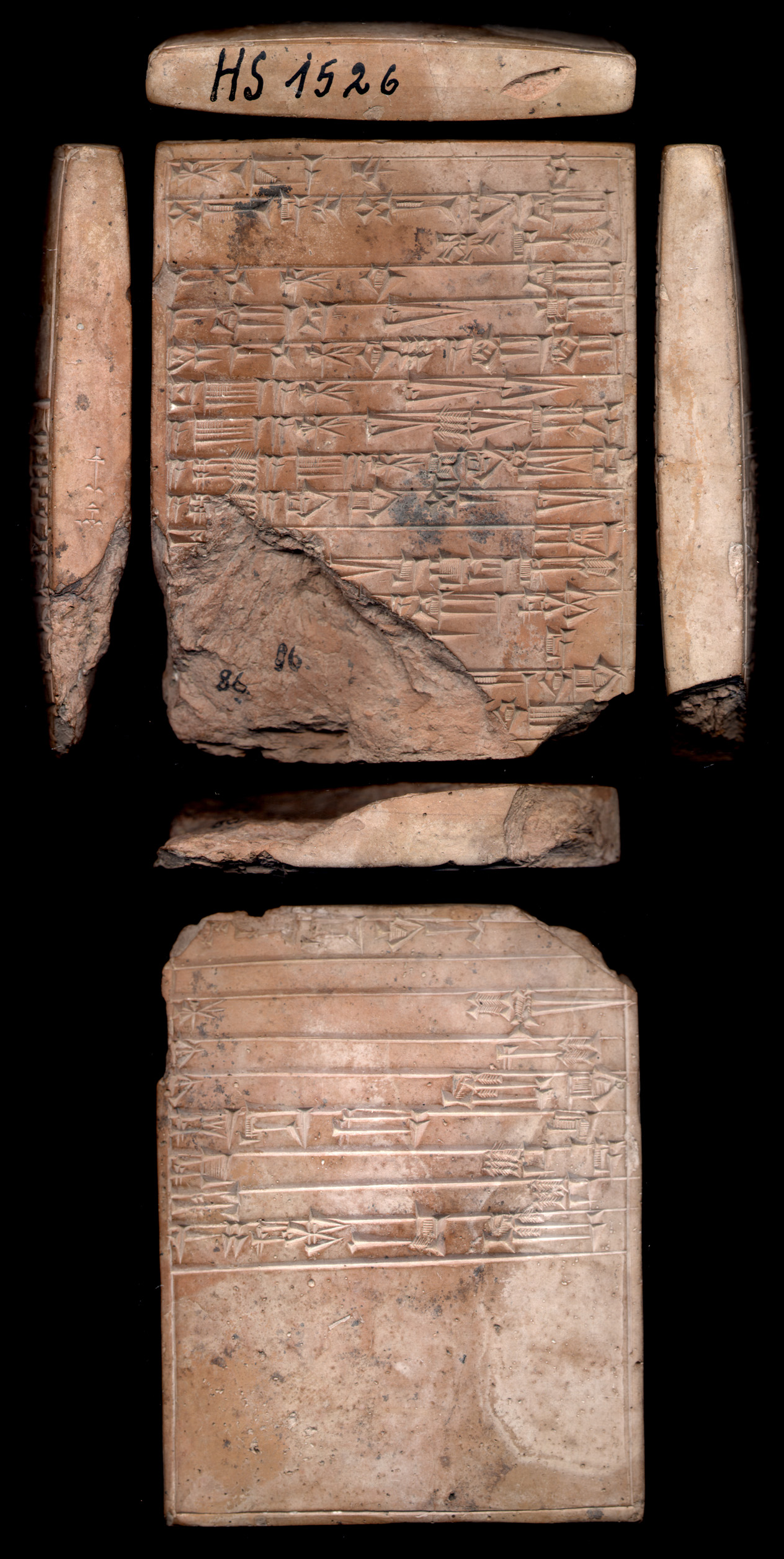 Its an incantation against snake bites. Here is a quote from Bill´s e-mail: "1. Incantation.
The snake called from the 'snake mountain',
the lizard of heaven and of earth
licked him.
5. The sons of the lizard of heaven and earth are seven,
it caused the well to be like air (ie. evaporate)
it poured out water for him as if in the wind,
it struck the rushes on its right like the wind,
10. While it tore out the rushes on (the patients) left
After having bound up his [...]
[..........].., may (the god) bind the (snake's) fang.
[May the incantations of the Abzu] of Eridu,
[of Asalluhi, son of] Eridu,
not be broken.
(Colophon: Nisaba, the true and benevolent woman, Addakala the scribe wrote (this), so that you might improve in your eye.
(edge): Nice job!
There is a colophon I think at the bottome of the text on the reverse - that is a space that contains information about scribe and tablet for purposes of organizing. IT is unusual that a scribe uses their name so early as the UrIII period - also unusual is that this cuneiform has some "graffiti" on it - on the side is written "nice job!" perhaps the comment of some instructor."The clay is still mud, 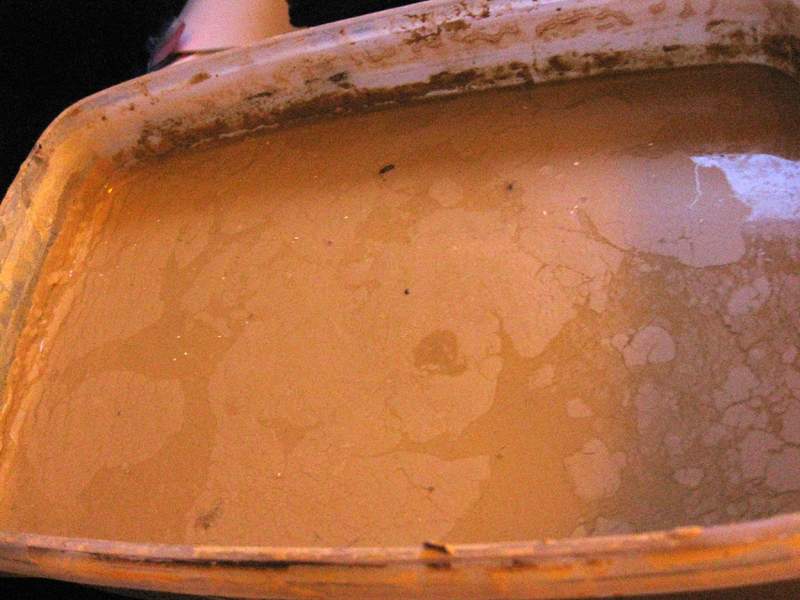 so i started my own line drawing 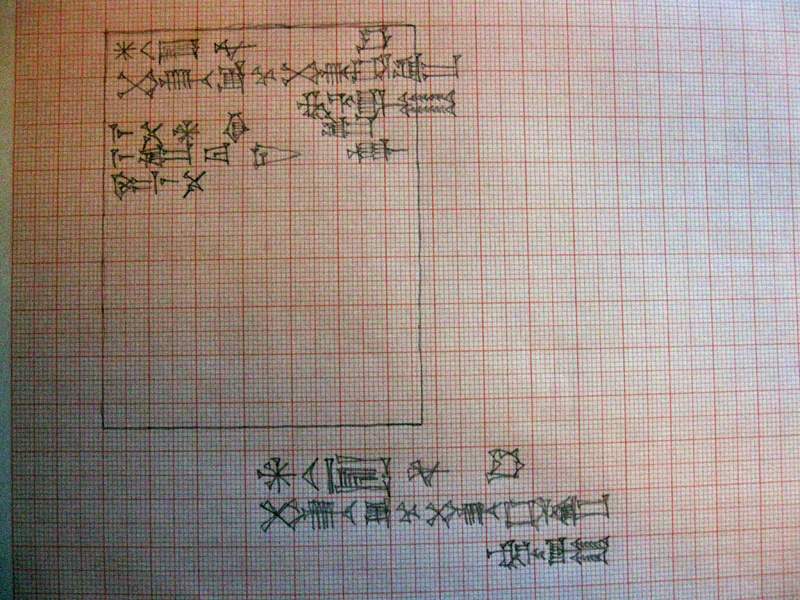 with the help of the transliteration Bill sent me (cdli doesnt provide one), the lineart and photography from the link above and the sign list of etcsl. linkNow finishing the line art and waiting that mighty clay gets his perfect consistency. edit: I think i will make the tablet bigger than the original, because 85x67 mm is not much space for so many signs  |
|
|
|
Post by sheshki on Dec 12, 2009 1:08:38 GMT -5
Wasnt able to sleep, so i continued the line art... 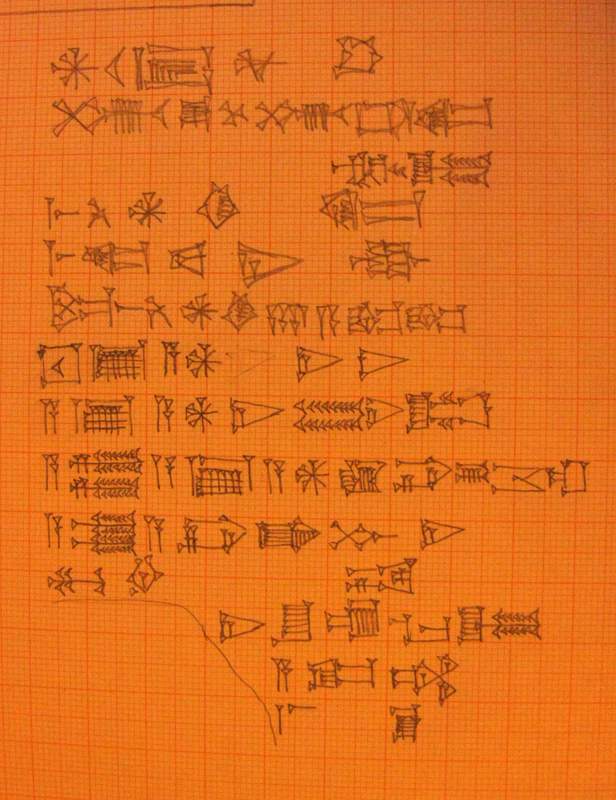 |
|
|
|
Post by sheshki on Dec 13, 2009 9:34:46 GMT -5
The finished line art. maybe i should do another one with correct spacing....but the clay...it is drying quick. Have to decide tonight. 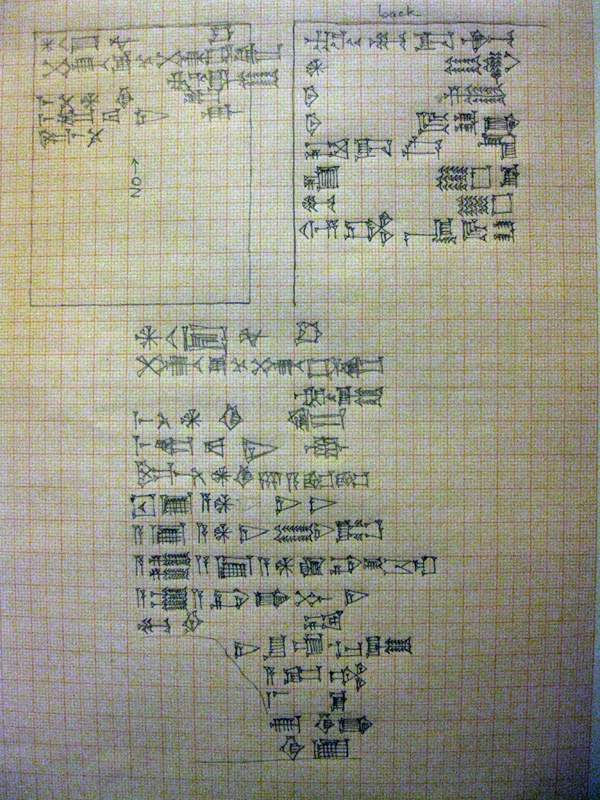 |
|
|
|
Post by us4-he2-gal2 on Dec 13, 2009 12:18:26 GMT -5
Looks excellent  I'm sure that planning and your well worn scribal hand should suffice from here - and if not, add water and try again  hehe
|
|
|
|
Post by sheshki on Dec 13, 2009 13:23:48 GMT -5
Here is a first writing test. The clay is still too wet. 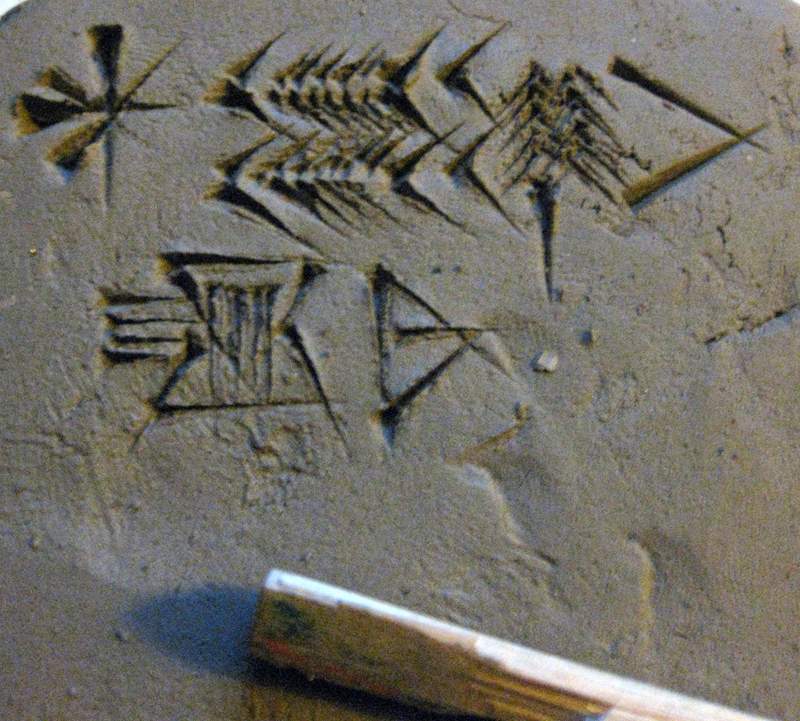 Nisaba be praised! Nisaba be praised! |
|
|
|
Post by sheshki on Dec 13, 2009 20:10:19 GMT -5
Slowly getting better 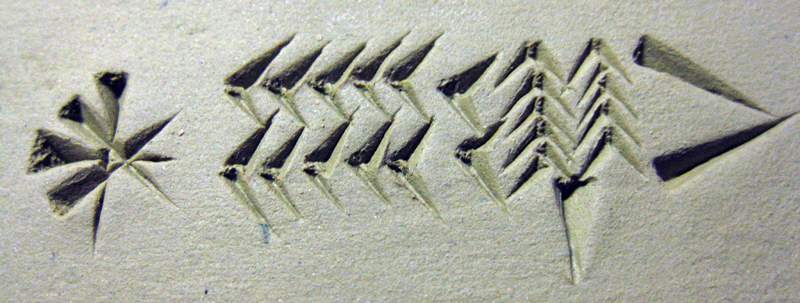 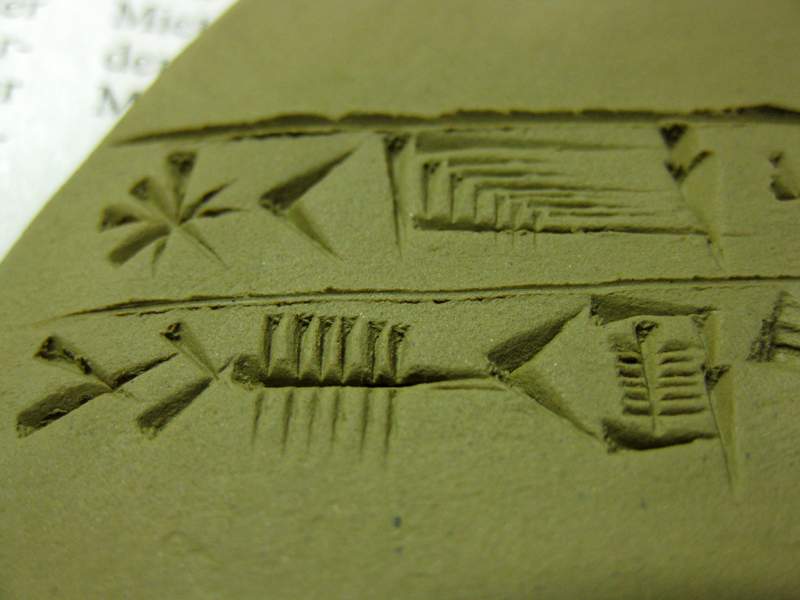 |
|
|
|
Post by sheshki on Dec 14, 2009 5:45:44 GMT -5
Progress.....the stylus is a bit rusty yet.... 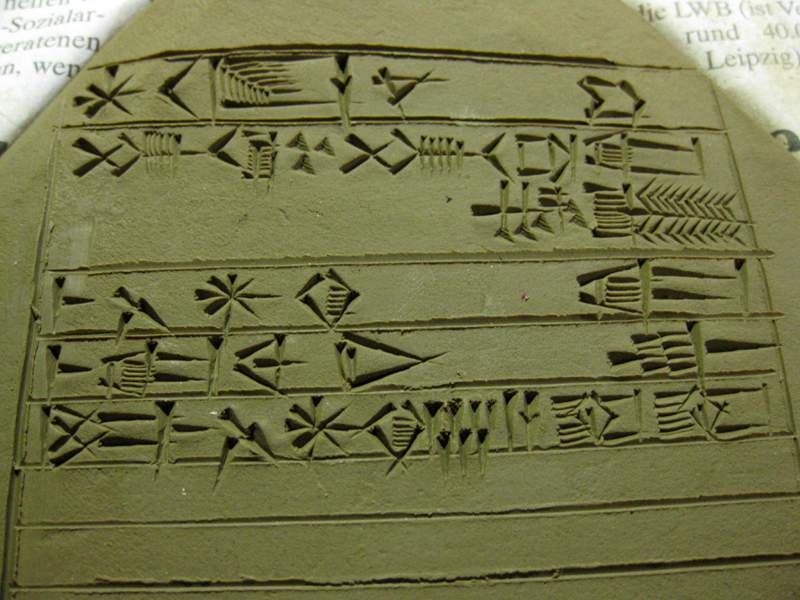 |
|
|
|
Post by sheshki on Dec 14, 2009 6:48:02 GMT -5
Front side done. Tiny signs.... Well, its hard to make a "look-alike" copy of the original tablet, cuz the style differs, so i copied a copy in my own style. 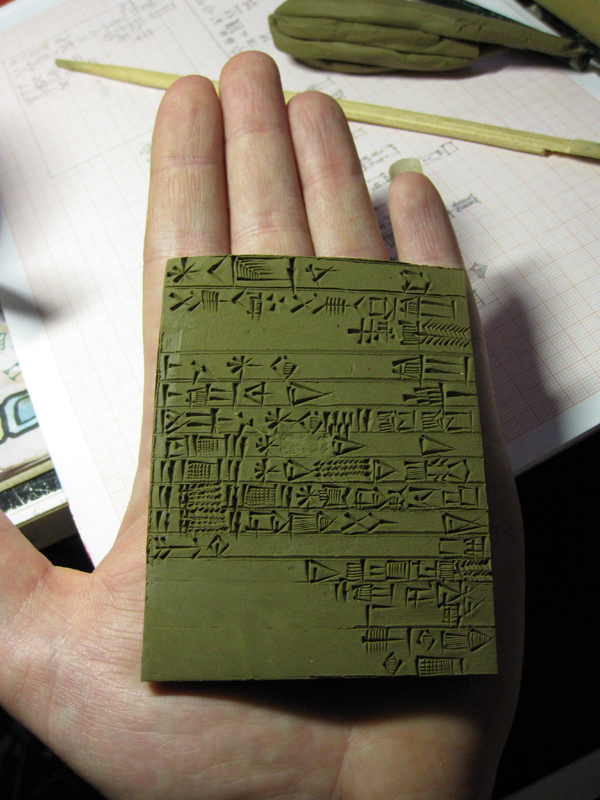 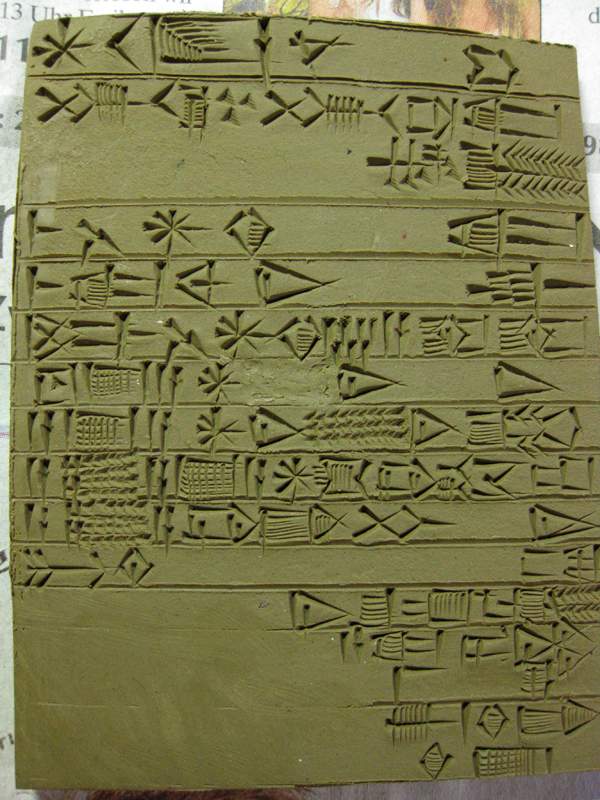 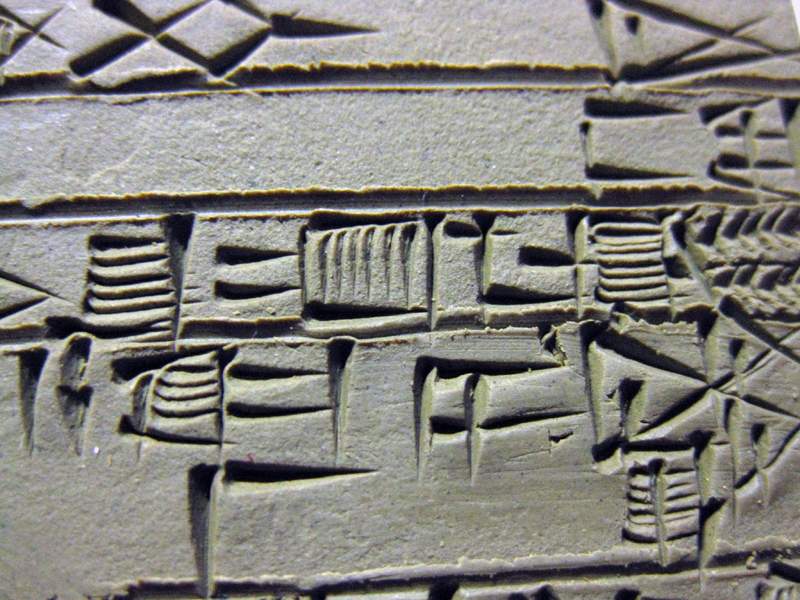 |
|
|
|
Post by sheshki on Dec 14, 2009 8:10:43 GMT -5
...and the backside. I added a few lines. So backside took around 40 minutes, front around 100, maybe less. Size: 90 x 70 mm 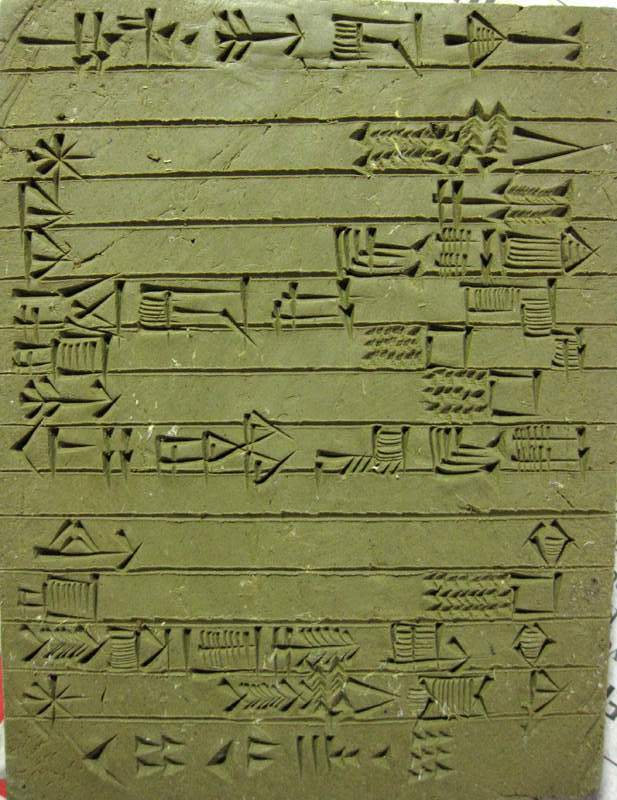 The clay is mighty |
|
|
|
Post by us4-he2-gal2 on Dec 14, 2009 13:11:54 GMT -5
Hey man - Nice work! The Sumerian cuneiform looks intensely intricate and this is no simple tablet. I understand early incantation tablets are among the most difficult to translate, textual complexities being among the reasons - your work here makes a nice new addition to clay I think  and this text has alot of relvence to enenuru - it is in fact the very tablet in which our webpage background them is based off of! enenuru.net/visuals/smokes2.jpg And the UrIII incantation texts such as this one compose the heart of the focus on magic on the enenuru Mesopotamian Magic board. The text translation is of this tablet is available on the Ur III incantations thread, reply# 12. For those wanting to see the original, as it is odd looking, the link is here. As is partiallly noted on our Ur III incantations thread, this tablet is special in a number of regards - (all the more impressive you were able to work with it!  . First of all, it's look is unusual, and as M. Geller had observed "although the tablet is intended to look like a monument inscription in stone, in actual fact the inscription is written on a clay tablet, presumable to be used as a school exercise tablet." Why was it intended to looking like a monumental inscription in stone? This seems to remain an open question. Another special thing about this tablet is that it contains the name of the scribe who wrote it - Addakala - extremely rare on an early incantation tablet! The clay looks particularly appealing on this tablet - better send me ingredients again  |
|
|
|
Post by sheshki on Dec 15, 2009 17:57:54 GMT -5
Thank you, man. it was fun to create it. Look, i just tried another stylus...looks good 
Holy Ereshkigal, sweet is it to praise you! |
|
|
|
Post by sheshki on Dec 15, 2009 18:18:02 GMT -5
|
|
|
|
Post by sheshki on Dec 16, 2009 9:42:45 GMT -5
Still some clay is left. So i made a quick one (P222636). 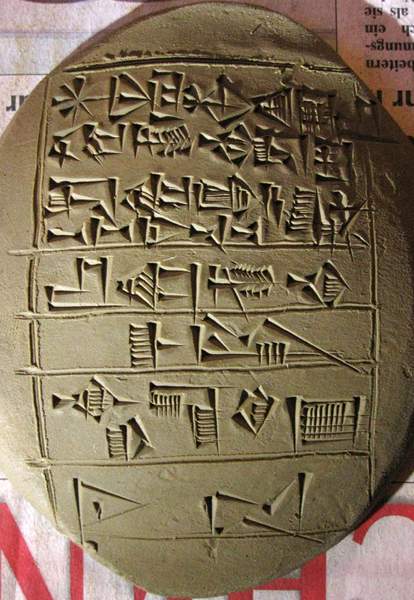 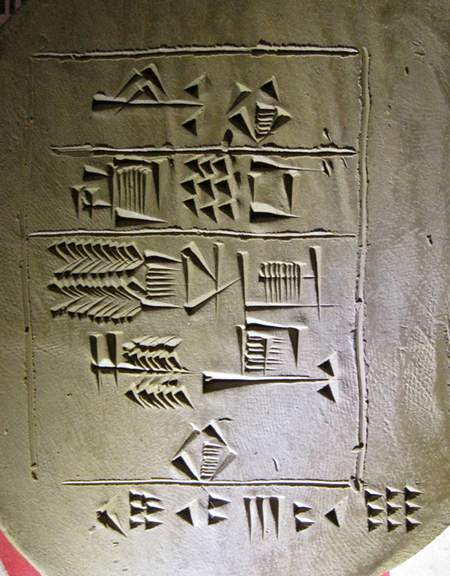 |
|
|
|
Post by sheshki on Dec 21, 2009 19:02:25 GMT -5
Now im out of Clay again 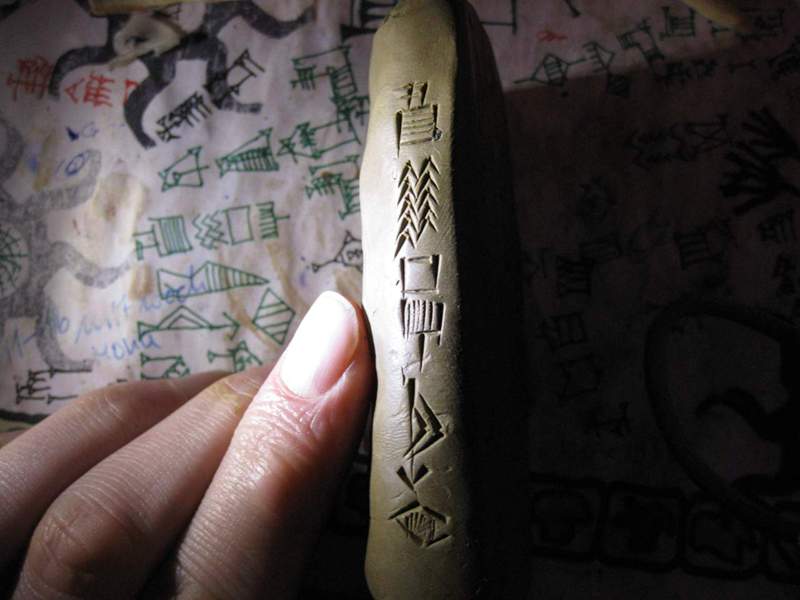 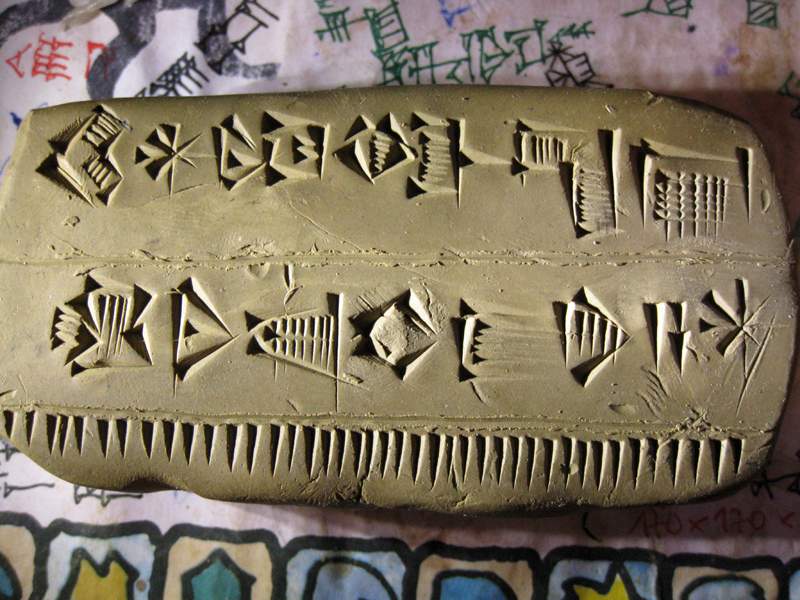 |
|
|
|
Post by sheshki on Dec 29, 2009 12:37:34 GMT -5
|
|
adapa
dubsartur (junior scribe)

Posts: 22
|
Post by adapa on Feb 11, 2010 14:01:17 GMT -5
Damn Sheshki! You are truly an artist, your work is beautiful! I tried my hand at making tablets a few times, but I never created anything like you. I did learn the art of making hand copies from original tablets. That is an art form. You have to be accurate, readable and pretty. The French have a long tradition of making accurate and beautiful hand copies. Look at the Mari volumes by Charpin and others, their copies are truly works of art. The British and American copying traditions are variable. Kramer was one of the worst, artwise. He was amazingly accurate, but readable? Barely, and pretty? Hell no. Gadd, who copied the Ur literary texts, made ugly copies and was not very accurate.
I was fortunate enough to learn all the different cuneiform scripts in an academic environment. In those days we had no workbooks, we just had Borger and Labat. We also had no Sumerian grammar books. We learned everything through oral tradition, just like the original dub-sars. Thompson didn't come out until my 3rd or 4th year of Sumerian. Still, the thought of learning Sumerian, Akkadian, and cuneiform on my own, even with all the aid available now, is daunting. I really respect your focus, ability, and courage.
I also had the privilege of learning how to read the original tablets. That is a skill very different from reading hand copies. I spent 2 years making a preliminary catalog of the cuneiform collection at the Kelsey Museum in Ann Arbor, MI and I spent 3 summers at the Tablet Room of the University of Penn. reading Sumerian literary texts from Nippur. It was there in the tablet room, surrounded by the dust of Sumer, that I was contacted by my beloved goddess Inana and sent spiraling into a vortex of spiritual chaos. That, however, is a different story. The challenge of reading the Sumerian literary texts is that most of them come from the context of the scribal schools and are written by students. Many of these students really sucked at it and needed a lot more practice or a different profession. And we have to try to decipher their crap! One tip I can give you for reading tablets and hand copies is this: do not try to distinguish signs by counting wedges. Every scribe, student, or priest who wrote seemed to write the signs differently. They are never consistent like the sign-lists make us think. Even the same scribe will write the same sign differently on the same tablet. You have to memorize the "gestalt" of the sign, the form, shape, and "feel" of the sign. Whether it has 2, 3, or 4 vertical wedges, or a winkelhaken here or there doesn't matter, it is the shape of the sign that's important. Anyway, sorry about being so long winded, but it's fun to talk about the old days! Cheers, Adapa
|
|
|
|
Post by sheshki on Feb 12, 2010 20:26:43 GMT -5
Thanks again for your words, Adapa. As it happened i had some Clay ready today so i searched through the cdli and found this Early Dynastic inscription, which caught my attention. Unfortunately my claypiece was almost 2 cm smaller then the original. . P010610And here is Clay, in all his beauty: 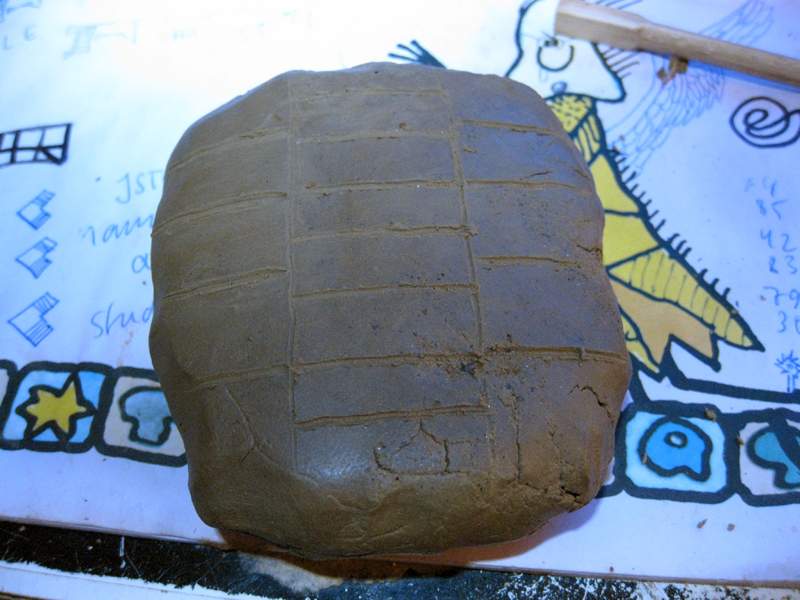 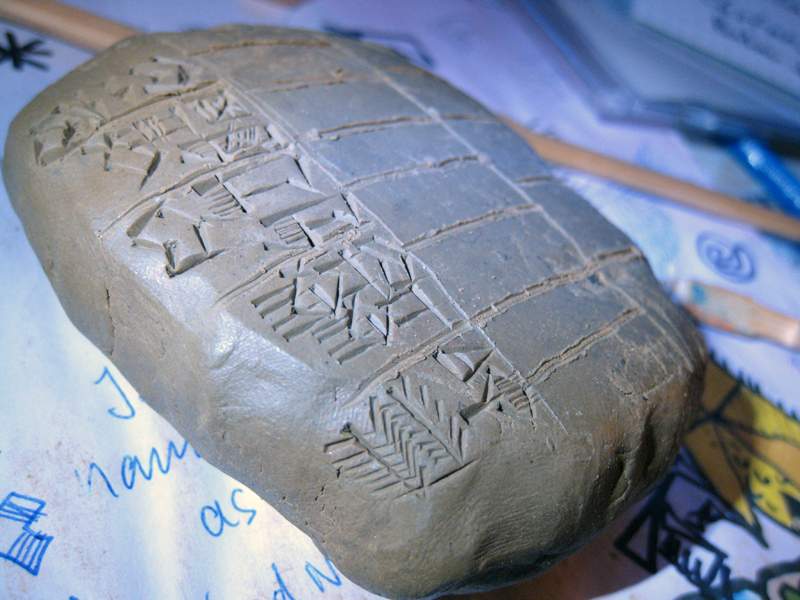 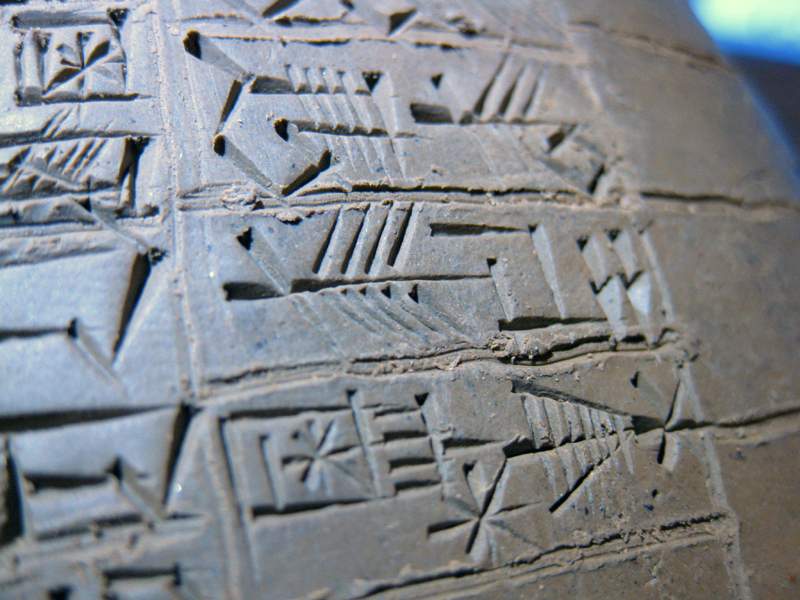 The AMA sign right above (rectangular with a DINGIR sign inside) is 5 mm tall. The AMA sign right above (rectangular with a DINGIR sign inside) is 5 mm tall.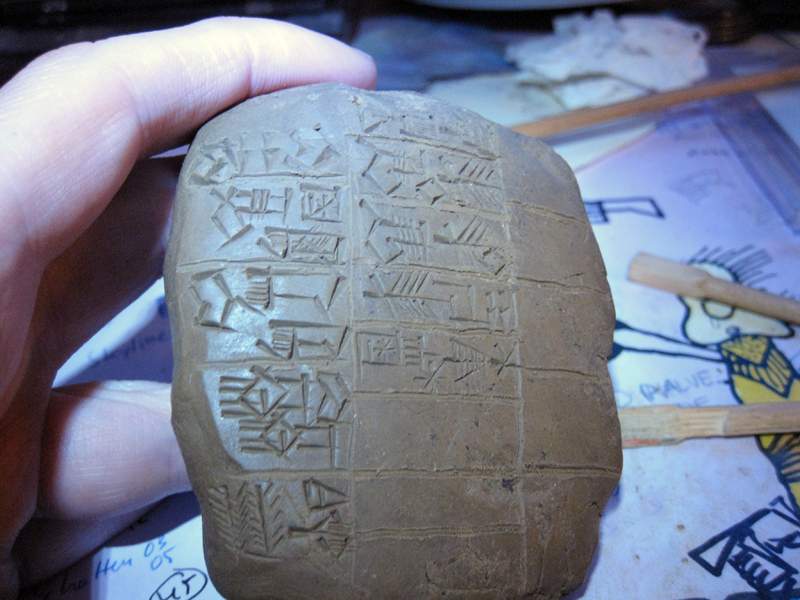 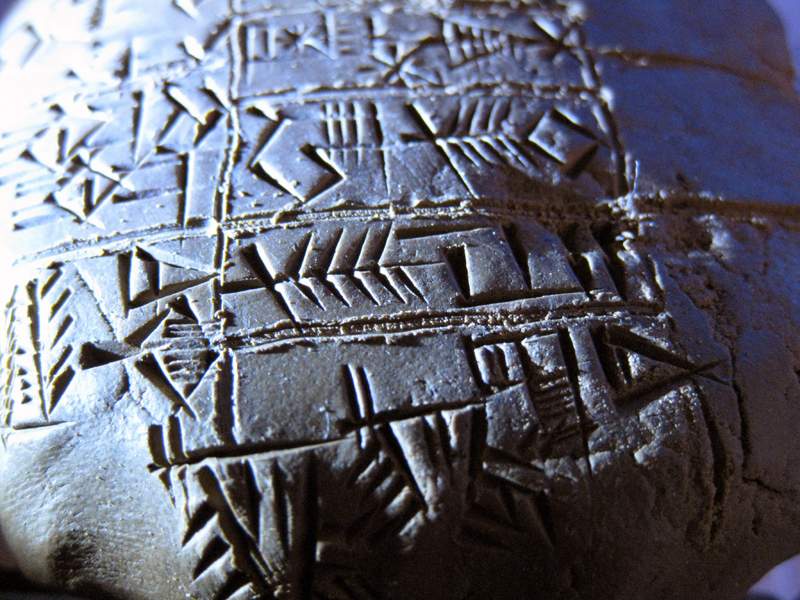 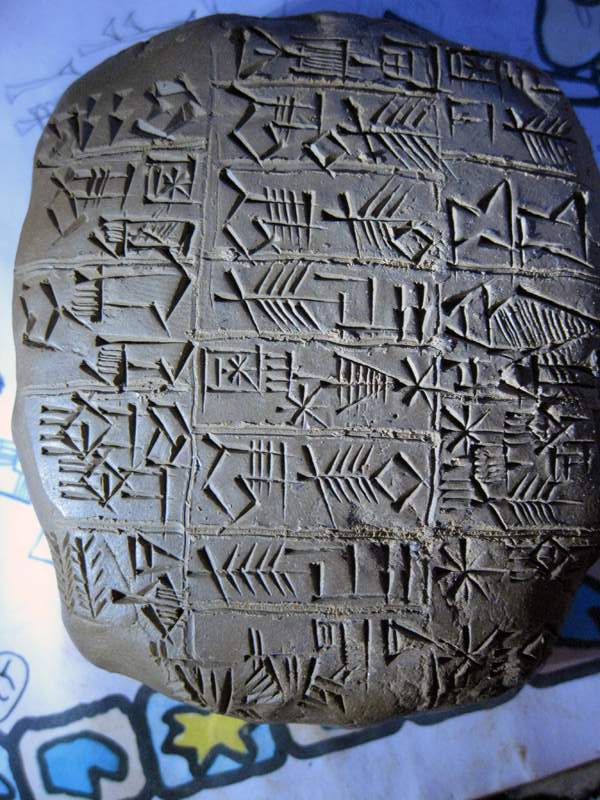 Now the backside. Way more signs then on front. Now the backside. Way more signs then on front.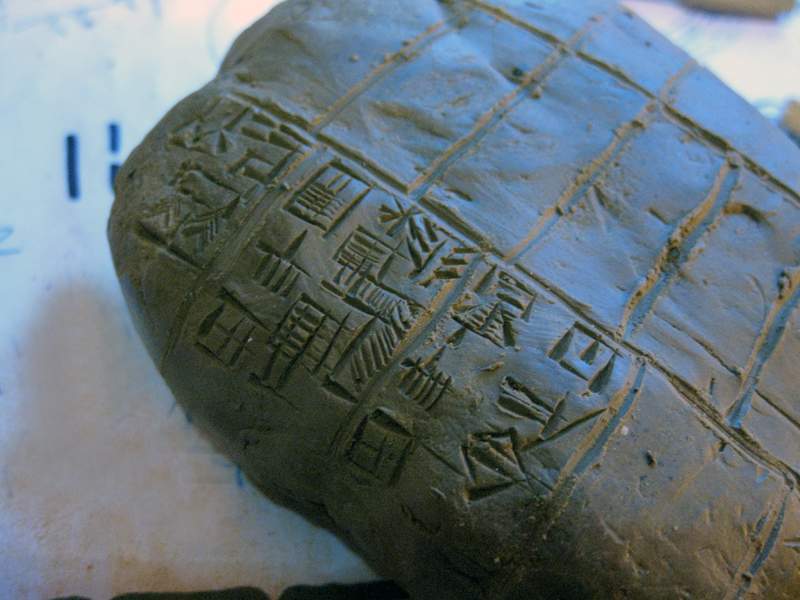 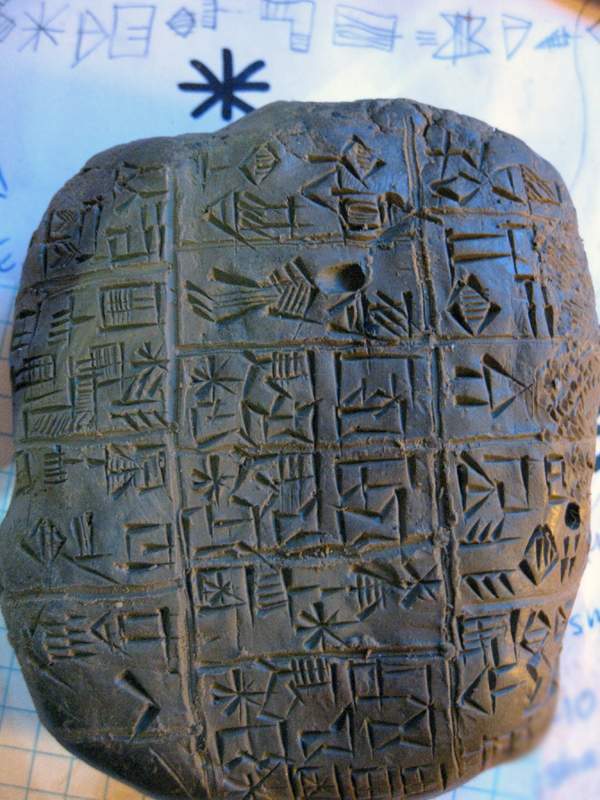 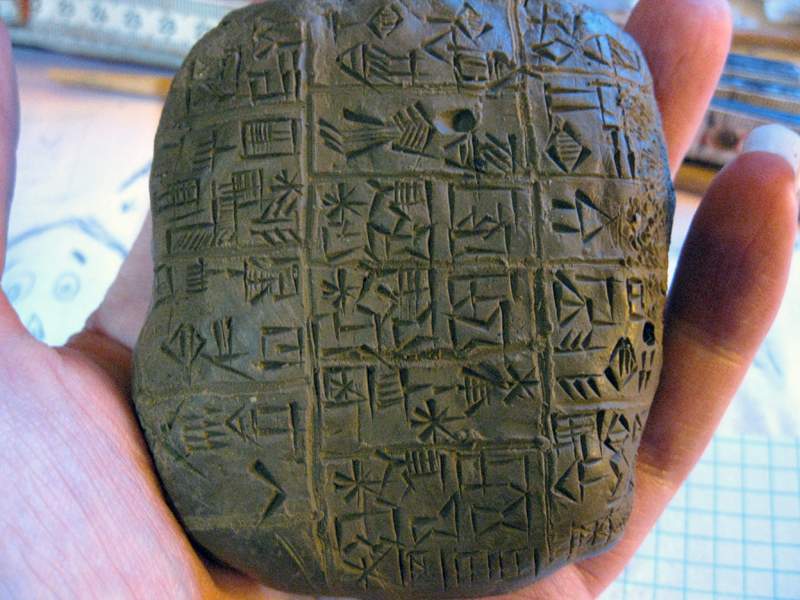 That was alot of work  The Clay is mighty! |
|
|
|
Post by us4-he2-gal2 on Feb 18, 2010 22:32:09 GMT -5
Wonderful piece mein Freund!  The cuneiform is excellent of course, it is a work of our dub-sar ;] And I particularly like the shape of this one! Nice thick tablet with somewhat irregular edges - it just looks right to me. And I see to large holes in the front, are those firing holes?? I didn't notice them in the original, but you are the dub-sar. Sometimes you need firing holes I guess  |
|
|
|
Post by sheshki on May 7, 2010 10:59:53 GMT -5
Today i found some Clay at a lake south of town, which is an ex coal mine. The Clay was yellow like butter. Good that i had a plastic bag with me. *note to self: take pictures next time* So, the Clay is watered. Post 400, invisible drinks for everyone  |
|
|
|
Post by sheshki on May 8, 2010 15:34:02 GMT -5
Today i was at the lake again, for like 5 hours. This time i found bright grey, yellow and dark brown Clay. Must have been 10 kg of Clay i carried home  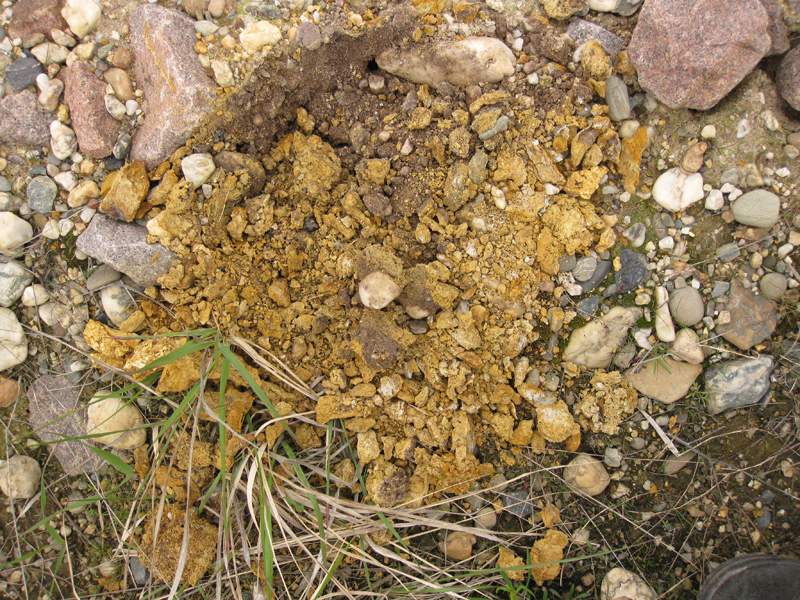 yellow Clay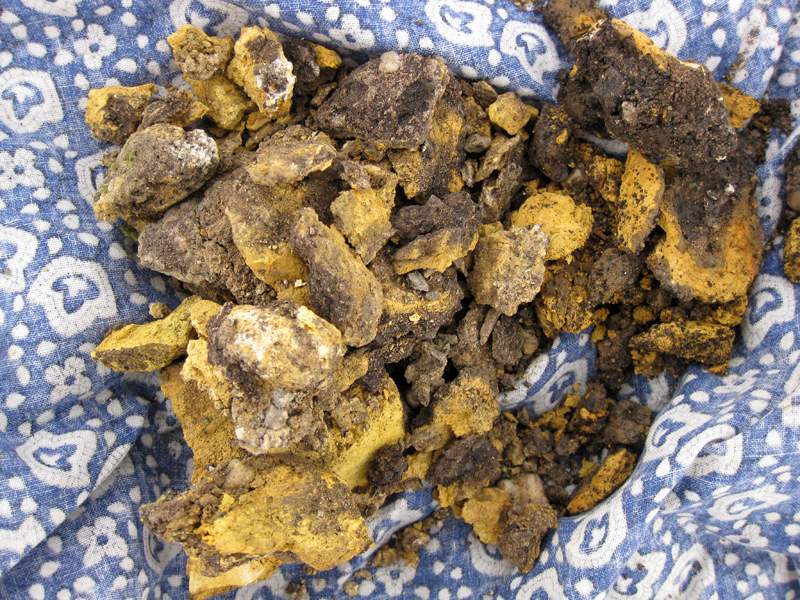 yellow Clay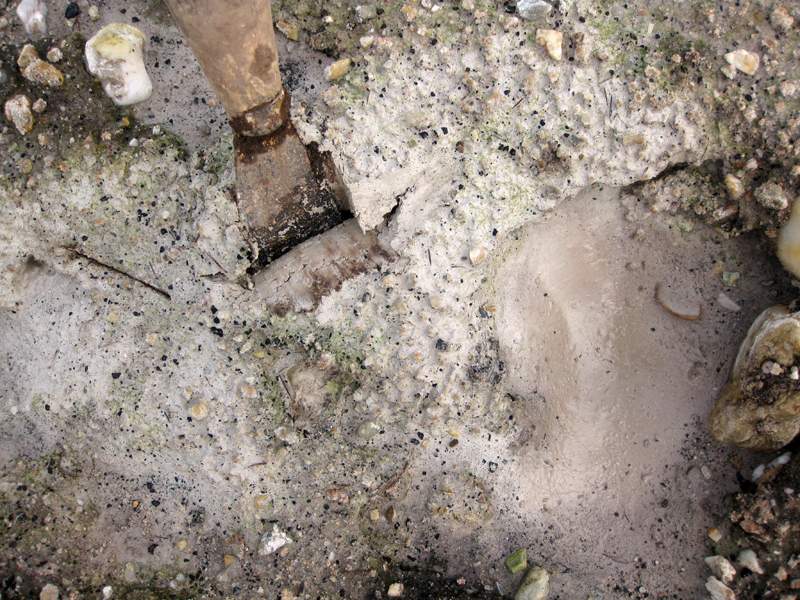 bright grey Clay |
|
|
|
Post by sheshki on May 12, 2010 4:56:26 GMT -5
The yellow Clay was the first ready to inscribe. The consistency of it was different from the one i knew from west of town. It was still very wet, but inscribeable, means it did not stick to the writing tool. Which is good. But. The yellow Clay has a very soft surface when dry. One could write with it like with chalk. And the tablets break easy. Which is bad. Next Clay to test : bright grey Clay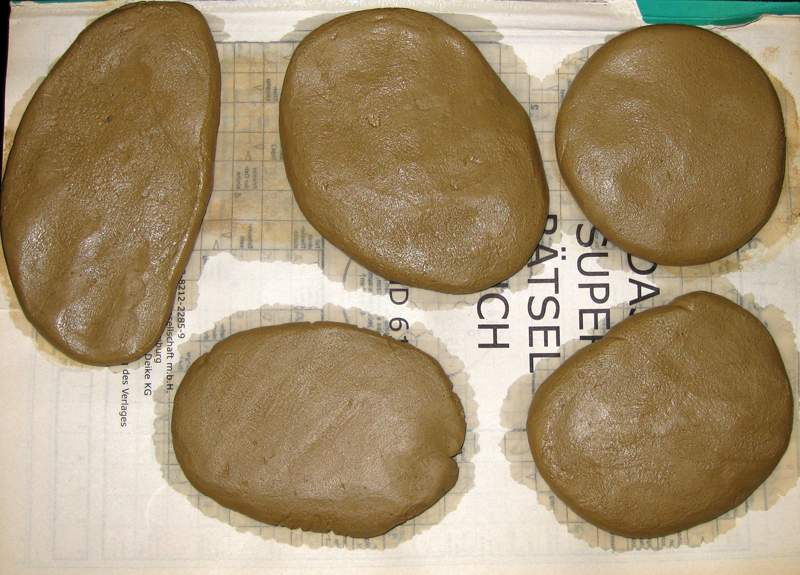 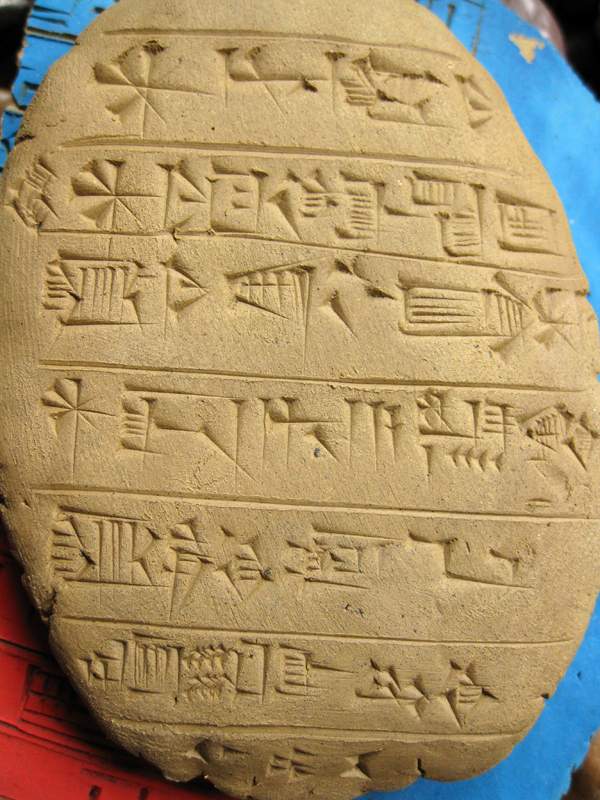 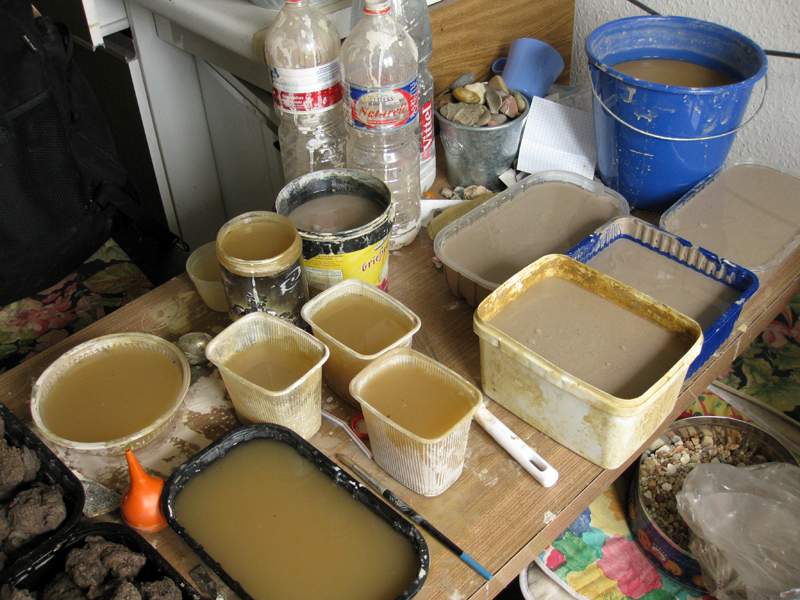 my kitchentable, it is a mess my kitchentable, it is a mess |
|
|
|
Post by sheshki on May 15, 2010 15:43:58 GMT -5
Well, i have to say that both, the yellow and the bright grey Clay are useless for tabletmaking, unfortunatly. They are way too soft and break easy...I hope the dark brown Clay works better.
|
|
|
|
Post by sheshki on May 19, 2010 14:47:22 GMT -5
Ahh...the brown Clay seems to work better. I just made a small test-tablet . size 5x5.5 cm The question is, will it break easy when dry? P221714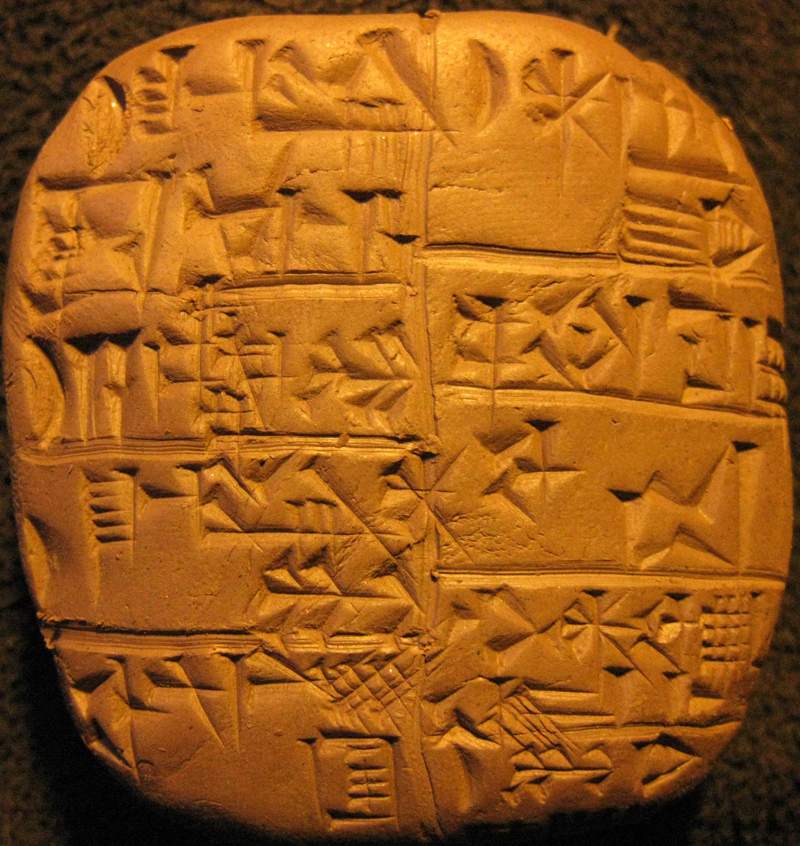 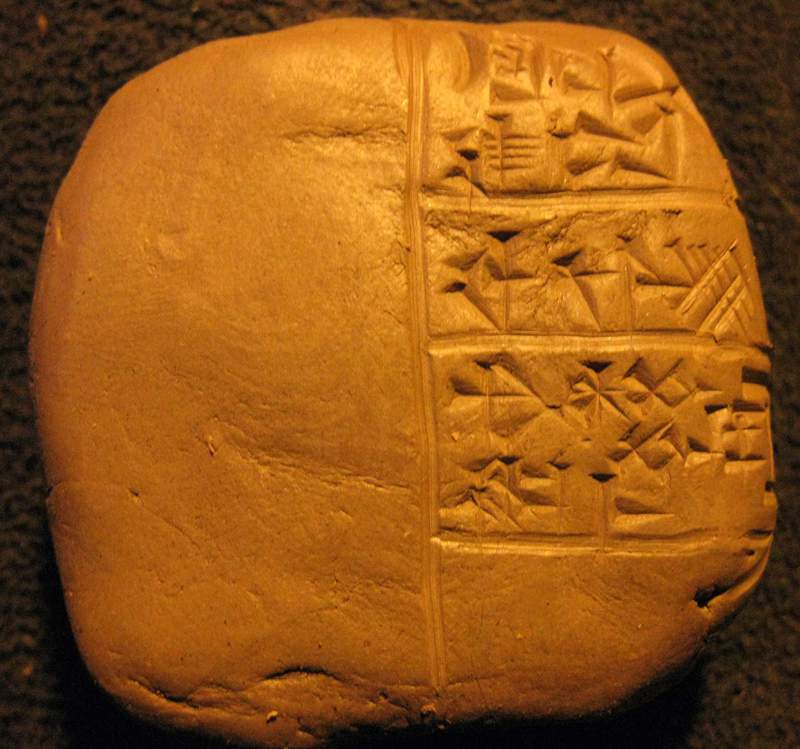 |
|
|
|
Post by sheshki on Jun 6, 2010 10:02:10 GMT -5
The test is over. I tried the different kinds of Clay, the dark brown one was best, but did shrink much...so i mixed it with the yellow Clay. This mix was a good idea, the Clay doesnt shrink so much nor breaks it easy. 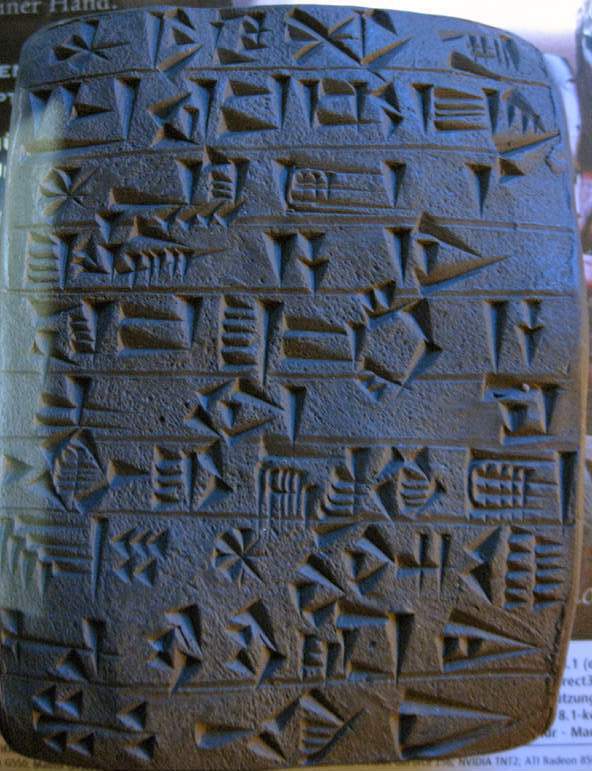 cdli.ucla.edu/P234285 cdli.ucla.edu/P234285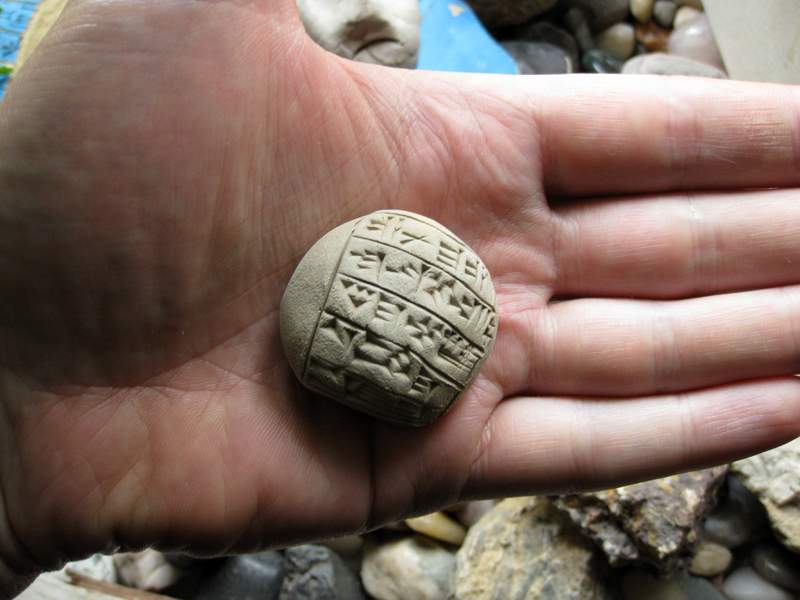 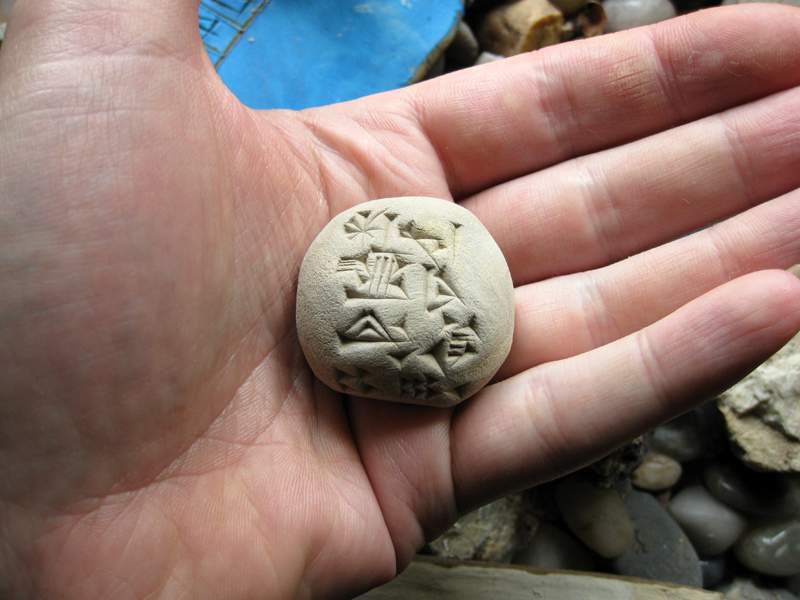 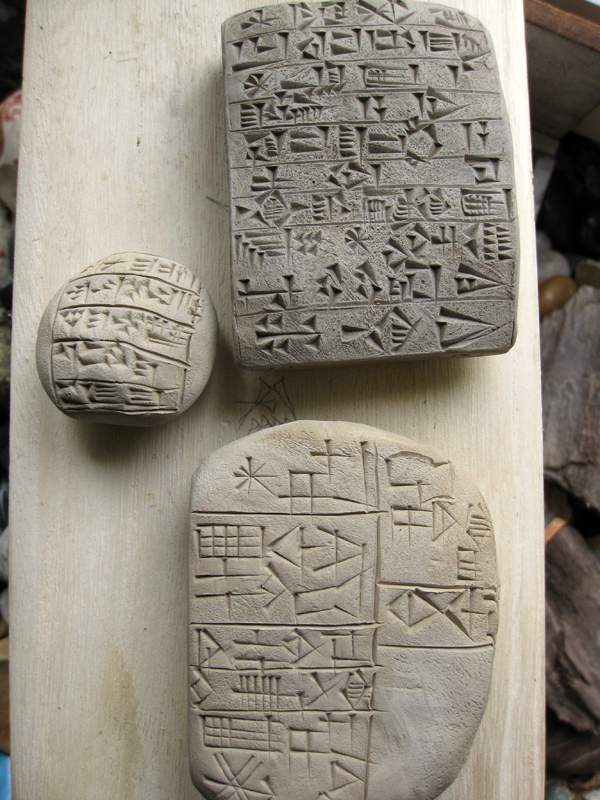 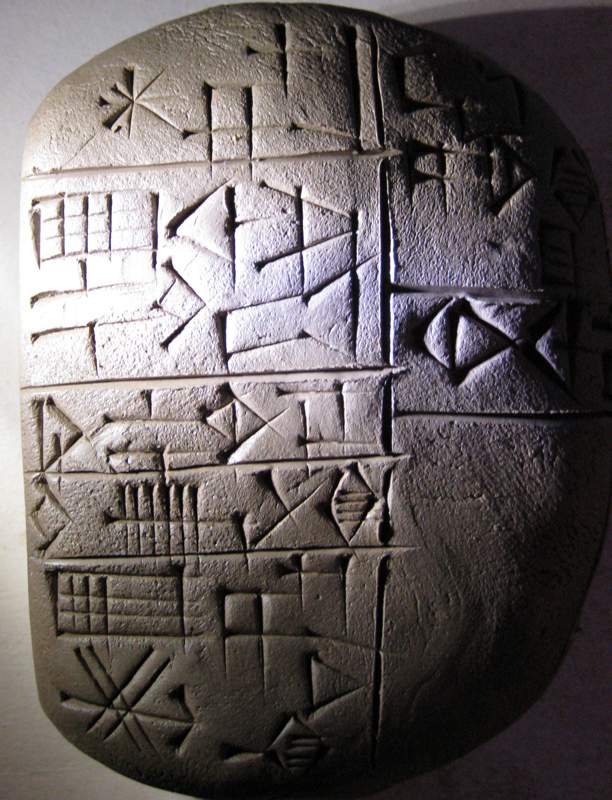 cdli.ucla.edu/P222691 cdli.ucla.edu/P222691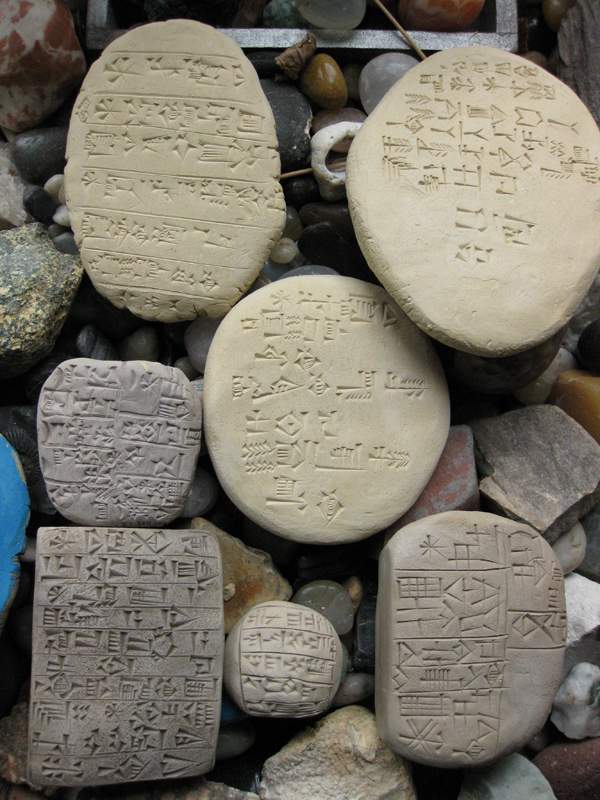 Here you can see the different kinds of Clay, from the yellow one (top) to the yellow/dark brown mixed one (3 tablets at the bottom) 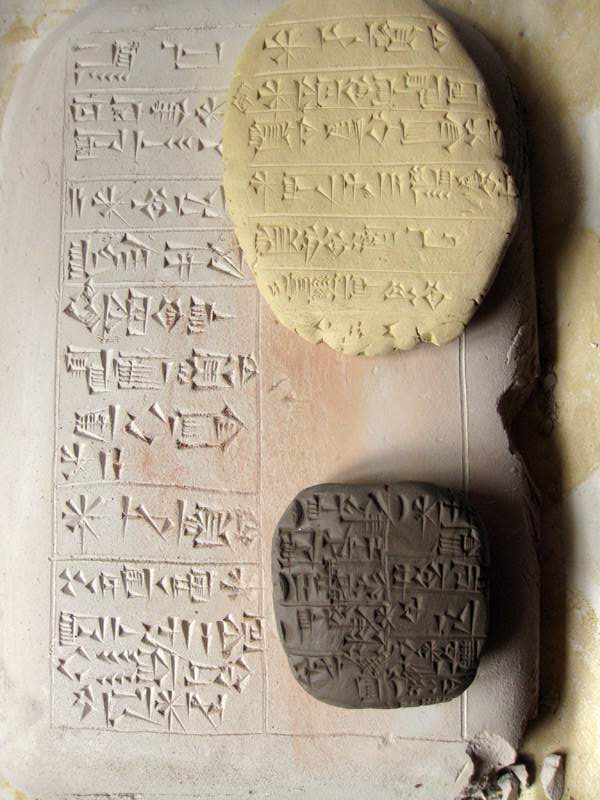 Here you can see the different kinds of Clay |
|
 - you should consider both the enenuru school of cuneiform and the offer made by the Oriental Institute this summer. They will, for a predictably high sum, mark your self study basically and give you a frameable paper certificate if you keep at it basically.
- you should consider both the enenuru school of cuneiform and the offer made by the Oriental Institute this summer. They will, for a predictably high sum, mark your self study basically and give you a frameable paper certificate if you keep at it basically.

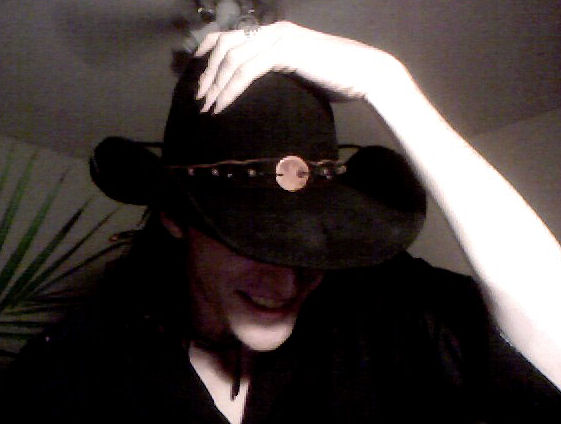








 . First of all, it's look is unusual, and as M. Geller had observed "although the tablet is intended to look like a monument inscription in stone, in actual fact the inscription is written on a clay tablet, presumable to be used as a school exercise tablet." Why was it intended to looking like a monumental inscription in stone? This seems to remain an open question. Another special thing about this tablet is that it contains the name of the scribe who wrote it - Addakala - extremely rare on an early incantation tablet!
. First of all, it's look is unusual, and as M. Geller had observed "although the tablet is intended to look like a monument inscription in stone, in actual fact the inscription is written on a clay tablet, presumable to be used as a school exercise tablet." Why was it intended to looking like a monumental inscription in stone? This seems to remain an open question. Another special thing about this tablet is that it contains the name of the scribe who wrote it - Addakala - extremely rare on an early incantation tablet!